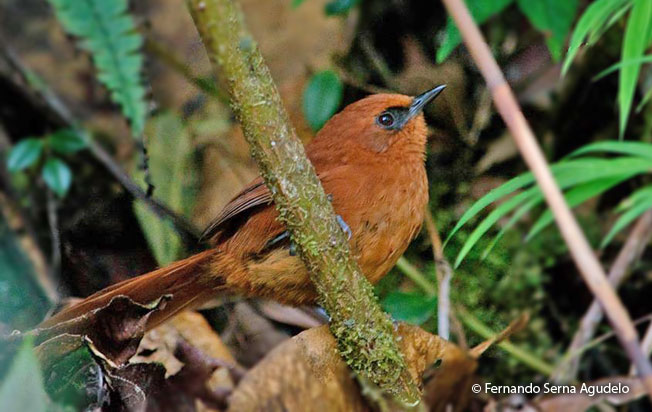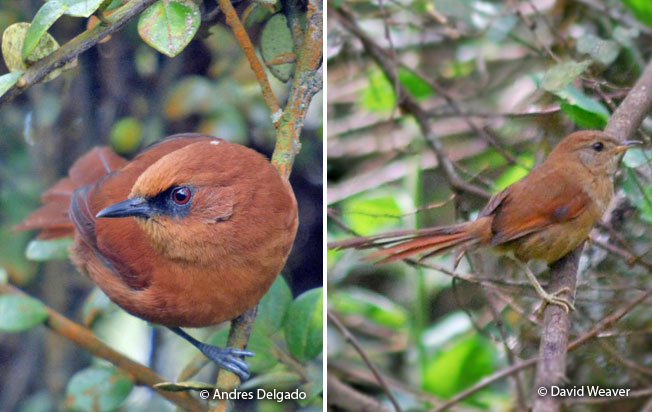Order: Passeriformes | Family: Furnariidae | IUCN Status: Least Concern

Age: Adult | Sex: Unknown | Loc. Eastern Andes of Colombia

Age: Adult | Sex: Unknown | Loc. Eastern Andes of Ecuador

Age: Adult | Sex: Unknown | Loc. Eastern Andes of Colombia

Age: Adult | Sex: Unknown | Loc. Eastern Andes of Colombia
Identification & Behavior: ~17.5 cm (6.8 in). The Rufous Spinetail is uniformly rufous without any hint of crown or wings of a different color. It has a distinctive black loral area. The tail is rufous. The juvenile is largely olive brown with a dusky loral area. It forages in the understory of the humid montane forest. It is similar to the Rufous Wren but is distinguished by a small body and long tail without any dusky barring as in the latter. The also similar Russet-mantled Softtail has a brownish forehead and face, not blackish lores, shorter tail, and pale bill.
Status: The Rufous Spinetail is uncommon in montane forests of the east slope of the Andes at elevations ranging between 1700-3300 m. It also occurs in Co and Ec.
Name in Spanish: Cola-Espina Rufo.
Sub-species: Rufous Spinetail (Synallaxis unirufa ochrogaster), J. T. Zimmer, 1935.
Meaning of Name: Synallaxis: Gr. sunallaxeos, sunallaxis = exchange. unirufa: L. uni= single, only and rufus= rufous.
Distribution Map

Voice
References:
-
- Species range based on: Schulenberg, T. S., D. F. Stotz, and L. Rico. 2006. Distribution maps of the birds of Peru, version 1.0. Environment, Culture & Conservation (ECCo). The Field Museum. http://fm2.fieldmuseum.org/uw_test/birdsofperu on 03/01/2017.